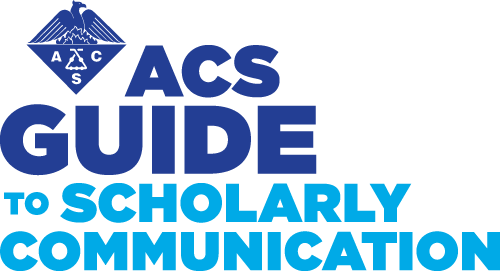Find the citation style that you need to use from the list below - there are resources for each style to assist you.
Not sure which citation style you need to use? Check your syllabus and/or your research assignment!
If you have any questions, don't hesitate to ask a librarian or consult the Writing Center.
ACS - American Chemical Society
ACS - American Chemical Society
Used extensively in chemistry.
-
 The ACS Guide to Scholarly Communication
by
Available online at link above
The ACS Guide to Scholarly Communication
by
Available online at link above
AIP - American Institute of Physics
This is a common citation style used in the field of Physics.
AMA - American Medical Association
AMA - American Medical Association
Used in medicine
-
AMA MANUAL of STYLE, 11th EDITION by
This title is available at the Library Services Desk.
-
AMA Style : Purdue OWL (Online Writing Lab)Quick Tip: Many databases have the capability to generate citations for you. Look for icons with the terms "cite" or "citation" next to them, but always be sure to copy edit the citation as these are not always accurate.
APA - American Psychological Association
APA - American Psychological Association
Generally used in psychology, education, nursing, occupational therapy, and the social sciences
-
Publication Manual of the American Psychological Association, 7th Edition
This title is available at the Library Services Desk. -
Concise Guide to APA Style by
This title is available at the Library Services Desk.
-
Academic Writer (APA) This link opens in a new window
Use to Find: support for conducting research, structuring a paper, and formatting using the APA Publication Manual. Contains: Academic Writer is APA's authoritative solution offering you a complete digital environment for teaching, learning, and writing academic papers.
-
Academic Writer login pageUse this link to go directly to the login page.
-
APA Style : Purdue OWL (Online Writing Lab)Quick Tip: Many databases have the capability to generate citations for you. Look for icons with the terms "cite" or "citation" next to them, but always be sure to review the citation as these are not always accurate.
-
Zbib (Zoterobib) citation generatorZoterobib will format your citation in APA style with a unique article ID or the title. Be sure to select American Psychological Association 7th edition under the Bibliography heading before you search for your article! Don't forget to double check the Zoterobib citation to be sure it is correct.

APS - American Physical Society
This is a common citation style used in the field of Physics.
ASA - American Sociological Association
ASA - American Sociological Association
Used in Sociology
-
American Sociological Association Style Guide byThis item is available at the Library Services Desk.
-
ASA Paper Template (UNOFFICIAL)This helpful template was created by the University of LaVerne to provide an example of what a paper formatted in ASA style would look like. This is not an official template provided by the ASA. Please always defer to your instructor's requirements.
Biology Style Guides
Writing required by courses in the life sciences follows styles described in the following two books. You can view this Guide to Citing Sources - Biology for more details and examples of citations.
Other options might be the APA Style Guide or CSE Style Guide but check with your professor to be sure.
-
A Short Guide to Writing about Biology by
Call Number: QH304.P43 2013Publication Date: 2013Eighth edition -
Writing Papers in the Biological Sciences by
Publication Date: 2001This title is available at the Library Services Desk.
Chicago Manual of Style
Chicago Manual of Style
Generally used in history, business and some of the fine arts
-
The Chicago Manual of Style, 17th Edition by
This title is available at the Library Services Desk.
CSE - Council of Science Editors
CSE - Council of Science Editors
Used in the sciences, especially the biological and life sciences.
-
Scientific Style and Format, 9th Edition
This title is available at the Library Services Desk.
A Handbook For Historians
A Handbook For Historians
-
 A Handbook for Historians
by
Publication Date: 2009This title is available at the Library Services Desk.
A Handbook for Historians
by
Publication Date: 2009This title is available at the Library Services Desk.
Legal Citation Style - The BlueBook
The Bluebook
Used in law.
-
 The BlueBook: A Uniform System of Citation, 20th Edition
This title is available at the Library Services Desk.
The BlueBook: A Uniform System of Citation, 20th Edition
This title is available at the Library Services Desk.
MLA - Modern Language Association
MLA - Modern Language Association
Generally used in the humanities disciplines of languages, literatures, and the arts.
-
MLA Handbook by
This item is available at the Library Services Desk.
